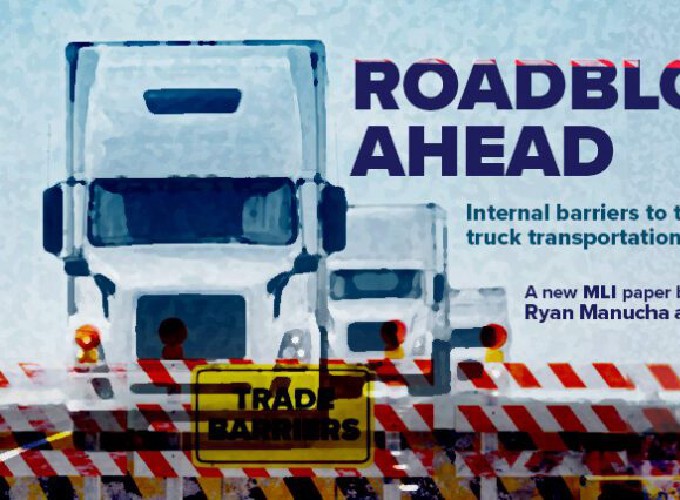[23] Roadblocks ahead: Internal barriers to trade in Canada's truck transportation sector

[23] Roadblocks ahead: Internal barriers to trade in Canada's truck transportation sector
Canada’s truck transportation sector faces significant economic and legal challenges due to internal trade barriers. These barriers, which include varying regulations across provinces, add approximately 8.3 percent to freight rates, thereby inflating business costs and reducing overall productivity in the economy. This report discusses the potential for a Mutual Recognition Agreement (MRA) under the Canadian Free Trade Agreement (CFTA) as a way to alleviate these obstacles, thereby enhancing economic integration and boosting Canada’s productivity and real GDP.
Internal trade barriers in trucking not only increase the direct costs of shipping goods across provincial lines but also contribute to broader economic inefficiencies. By requiring businesses to navigate a patchwork of provincial regulations, these barriers limit the overall market efficiency and raise prices for consumers. The report finds that eliminating these barriers could lead to significant economic gains across Canada, with the potential to increase national GDP and reduce regional income disparities.
To tackle the trade barriers, the report proposes that provinces and territories adopt MRAs, which would allow different provincial standards to be recognized under a unified national framework. This approach aims to preserve space for diversity in provincial regulations while ensuring that goods and services can flow more freely across borders. This method may be less burdensome than full regulatory harmonization, which requires provinces to agree on uniform standards. Robust federal-provincial-territorial policy networks make truck transportation an ideal domain in which to implement MRAs. Their implementation here would showcase MRAs’ effectiveness as a tool that might be viable for tackling other internal trade barriers that the CFTA’s Regulatory Reconciliation and Cooperation Table (RCT) is studying.
The report also discusses the historical context and evolution of these interprovincial barriers, noting that despite the liberalization efforts following the 1995 intergovernmental Agreement on Internal Trade, many regulatory obstacles have persisted. These include differences in acceptable truck sizes and weights, permitting obligations, safety standards, and licencing requirements, which complicate the free movement of goods and services across the country. The paper also examines case studies from other jurisdictions, such as the United Kingdom, where similar barriers were successfully reduced, to highlight the potential benefits of reform. These examples provide a roadmap for Canada, suggesting that modest, strategic adjustments to technical regulations could lead to substantial economic and environmental benefits, including reduced carbon emissions and lower transportation costs.
To support its economic analysis, the report uses data from Statistics Canada and a detailed model of Canada’s economy that maps the interconnections between sectors and provinces. It quantifies the impact of trade barriers not just on the trucking industry but across the entire economy. By applying this model, the report illustrates how reducing trade barriers could benefit all provinces, but especially those with lower incomes, thereby addressing some of the existing economic inequalities in Canada. Specifically, we estimate that the gain from removing these internal barriers to be approximately $1.6 billion annually. The report also identifies materially larger gains for smaller and lower-income provinces.
Overall, the report advocates for strategic policy reforms under the CFTA to reduce internal trade barriers in the truck transportation sector. By adopting a flexible approach through mutual recognition agreements, Canada can enhance its economic unity and unlock significant growth potential, making a strong case for regulatory reform as a catalyst for broader economic improvements. These changes have the potential not only to increase GDP but also to contribute to a more equitable economic landscape across the provinces.
